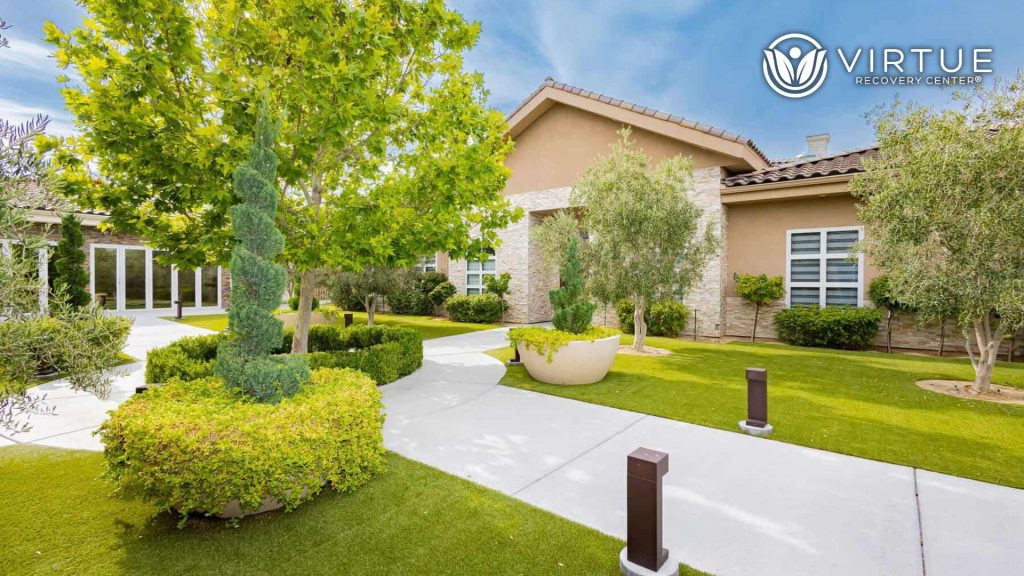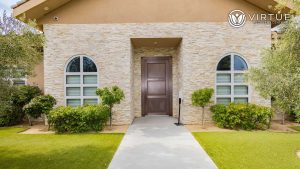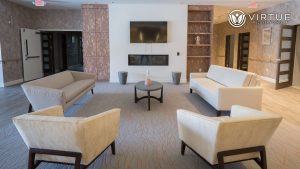Key Takeaways
- A calm healing environment promotes physical and emotional recovery.
- Environmental design influences patients’ health and well-being.
- Natural light, quiet surroundings, and comforting spaces reduce stress.
- Evidence-based healing spaces improve patient satisfaction and care quality.
- Integrating calm design elements supports the healing process in inpatient care.
Introduction
Yes, a calm environment truly enhances healing in inpatient treatment. Patients recovering from addiction or mental health challenges experience better outcomes when surrounded by a healing environment that soothes the senses and supports overall well-being.
The physical environment plays a vital role in promoting relaxation, reducing anxiety, and fostering emotional balance. Evidence-based healing spaces are more than just well-designed rooms—they are intentionally created to enhance the healing process and improve patient satisfaction.
Understanding the Healing Environment
A healing environment is an intentionally designed space that supports recovery by promoting calm, safety, and comfort. In inpatient settings, this includes the physical environment, emotional support systems, and overall care design.
An optimal healing environment integrates natural light, soothing colors, quiet surroundings, and thoughtful interior design that reduces sensory overload. The health and well-being of patients improve when environmental stimuli are minimized, allowing their bodies and minds to focus on recovery.
Key Elements of a Healing Space
A healing space isn’t limited to aesthetics—it encompasses everything from air quality and natural light to staff behavior and interpersonal dynamics. Studies show that patients exposed to views of nature and soft lighting experience less stress and improved relaxation during treatment.
Calm settings with quiet rooms and comfortable furniture allow for rest and reflection. These spaces promote optimal healing and increase the likelihood of long-term recovery.
Creating a Calm and Optimal Healing Environment
The internal environment of an inpatient facility should promote emotional and psychological safety. Features such as soothing color palettes, nature-inspired artwork, and noise reduction design elements are part of evidence-based design research that encourages healing relationships between patients and staff.
At Virtue Recovery Las Vegas, thoughtful environmental design helps patients regain a sense of control and self-worth. By addressing the interpersonal environment, clinicians create compassionate interactions that strengthen the experience of healing.
How Environmental Design Promotes Recovery
Environmental design is not only about architecture—it’s about intention. The built environment affects how patients feel and behave. Quiet hallways, soft lighting, and private spaces help foster trust and comfort.
Additionally, healing arts such as music or mindful imagery encourage relaxation and emotional release.
For example, incorporating healing landscapes within outdoor areas allows patients to reflect in nature, improving patient satisfaction and contributing to an evidence-based healing experience.
Healing in the Physical and Behavioral Environment
In a hospital environment, the behavioral environment and physical layout must align with healing principles. When patients feel safe, supported, and calm, their bodies naturally enter a state that allows healing to occur.
Healthcare providers play a crucial role in maintaining a compassionate and evidence-based healing approach. Their behavior influences the interpersonal environment, creating a shared sense of purpose toward healing.
A well-structured care setting—with private patient rooms, temperature control, and spaces for social connection—enhances the healing process for patients. These design elements encourage emotional recovery, strengthen relationships, and lead to positive health outcomes.
The Role of Calm in Patient Health and Recovery
Calm is a fundamental part of the healing process. In a peaceful setting, patients experience less stress, lower blood pressure, and improved sleep—all critical to recovery and healing.
At Virtue Recovery Las Vegas, calmness is fostered through interior design, respectful communication, and evidence-based design principles. Staff encourage mindfulness and relaxation, helping each individual reconnect with their inner strength.
Integrative Health and Healing
An optimal healing environment incorporates the whole person—mind, body, and spirit. Integrative health and healing emphasize the connection between environment, emotion, and physical recovery.
The external environment—from room temperature to outdoor access—affects health and wellbeing. Each design decision at Virtue Recovery Las Vegas aligns with principles of healing that ensure the environment promotes patient progress.
Patient Experience and Healing Outcomes
Patients who recover in calm, well-designed environments report higher satisfaction and reduced anxiety. A systematic review of healthcare settings confirms that environmental design directly impacts recovery speed and emotional well-being.
The experience of healing is deeply personal, yet universally enhanced by quietness, safety, and compassionate care. This is why facilities like Virtue Recovery Las Vegas invest in creating optimal healing environments supported by evidence-based design research.
Healing Spaces at Virtue Recovery Las Vegas
Virtue Recovery Las Vegas integrates healing environments across its inpatient programs. From private rooms to community lounges, every detail supports healing intentions and personal wholeness.
Patients benefit from spaces that encourage connection and reflection, supported by compassionate staff who understand the importance of the environmental features in recovery. This combination creates a positive impact on the healthcare system and ensures long-term well-being.
Conclusion
A calm and thoughtfully designed environment has the power to transform inpatient treatment. It promotes optimal healing, encourages emotional stability, and supports the whole person—body, mind, and spirit.
Virtue Recovery Las Vegas exemplifies how an evidence-based healing approach, paired with compassionate care, can guide individuals toward full recovery and well-being.
Call Virtue Recovery Las Vegas today at (702) 996-5973 to speak with a caring team member and begin your recovery journey.
Virtue Recovery Las Vegas
📞 (702) 996-5973
📍 9230 Corbett St. Las Vegas, NV 89149
🔗 Contact Virtue Recovery Las Vegas
FAQs
What makes a healing environment effective?
A healing environment works by reducing stress, improving comfort, and promoting relaxation. The combination of natural light, soft colors, and supportive staff interactions creates the ideal conditions for recovery.
Why is calmness important in inpatient treatment?
Calmness allows the body and mind to focus on healing rather than stress. It encourages better sleep, emotional balance, and improved outcomes in addiction recovery.
What design elements help promote healing?
Design elements such as natural light, greenery, soothing art, and noise control are key. They contribute to relaxation and enhance the patient’s healing experience.
How does the physical environment affect patient care?
The physical environment impacts comfort, safety, and well-being. When patients feel supported by their surroundings, they engage more fully in treatment.
What is evidence-based design in healthcare?
Evidence-based design uses research and clinical data to create spaces that improve outcomes. It’s an essential principle in developing healing environments in inpatient care.









